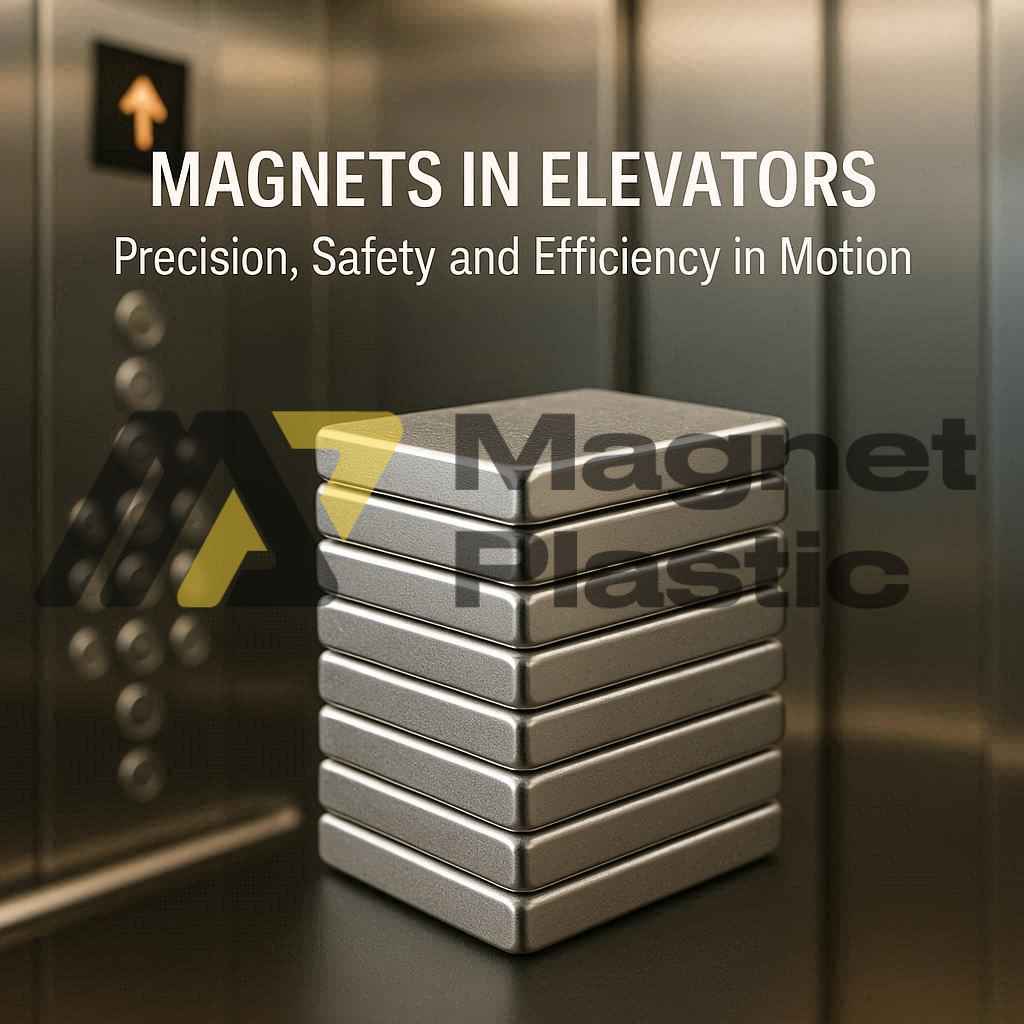Magnets in Elevators: Precision, Safety, and Efficiency in Motion
Elevators have become an essential part of our daily lives, making it easier to move between floors in residential, commercial, and industrial buildings. Behind their apparent simplicity lies sophisticated technology, where magnetic materials play a crucial role. Magnets not only enable the movement of the cabin but also ensure safety, energy efficiency, and passenger comfort.
Permanent Magnets: The Heart of Movement
Permanent magnets are the most commonly used in elevators. Materials such as ferrite, magnetic strips, and neodymium offer stable and long-lasting properties. In this context, permanent magnets serve two main functions:
- Generating the force required to move the cabin up or down.
- Providing magnetic braking, preventing unwanted movement when the elevator is not in use.
Neodymium, thanks to its high magnetic strength, is often employed in advanced systems where compactness and performance are essential.
Plastic-Bonded Magnets
Another type of magnet commonly found in elevators is the plastic-bonded magnet, such as magnetic bands or sheets. Manufactured by injection molding ferrite with plastic, these magnets offer a flexible and durable solution. Their most frequent application is in elevator door sensors, where they detect the position of the cabin to ensure doors open and close safely.
Sensor Magnets: Precision in Every Ride
Sensor magnets, also known as magnetic sensors, detect changes in a magnetic field and send control signals. In elevators, they are essential for:
- Tracking the exact position of the cabin, ensuring perfect alignment with each floor’s threshold.
- Controlling speed and deceleration as the cabin approaches a floor, improving passenger comfort and reducing mechanical wear.
- Activating emergency braking systems in case of electrical failures or mechanical issues, securing the cabin and protecting passengers.
- Enabling continuous system monitoring to detect anomalies early and prevent major breakdowns.
The Advantages of Magnets in Elevator Cabin Fixation
Using magnets in elevators provides several benefits:
- Increased precision: Magnetic sensors ensure exact alignment at every stop.
- Enhanced safety: Immediate responsiveness improves passenger protection.
- Reduced maintenance costs: Early detection of issues lowers repair needs and extends system lifespan.
- Energy efficiency: Precise movement control reduces power consumption.
- Comfort and smoothness: Trips are quieter and vibration-free.
- Speed and control: Allowing faster yet stable vertical travel.
A Constantly Evolving Technology
Magnets have revolutionized how elevators function, improving precision, safety, and efficiency in these vital systems. As technology continues to advance, new innovations are likely to emerge, making elevators even safer, more reliable, and more efficient for users around the world.
